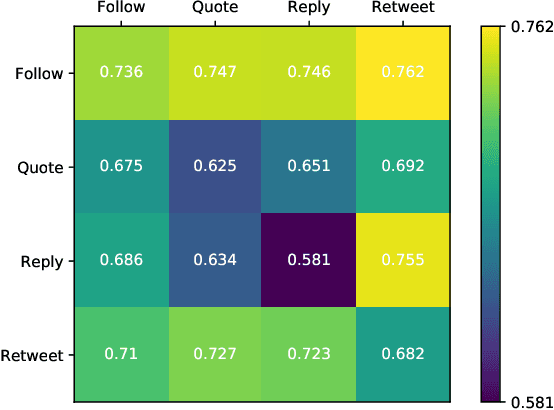John W. Byers
Learn to Earn: Enabling Coordination within a Ride Hailing Fleet
Jul 16, 2020



Abstract:The problem of optimizing social welfare objectives on multi sided ride hailing platforms such as Uber, Lyft, etc., is challenging, due to misalignment of objectives between drivers, passengers, and the platform itself. An ideal solution aims to minimize the response time for each hyper local passenger ride request, while simultaneously maintaining high demand satisfaction and supply utilization across the entire city. Economists tend to rely on dynamic pricing mechanisms that stifle price sensitive excess demand and resolve the supply demand imbalances emerging in specific neighborhoods. In contrast, computer scientists primarily view it as a demand prediction problem with the goal of preemptively repositioning supply to such neighborhoods using black box coordinated multi agent deep reinforcement learning based approaches. Here, we introduce explainability in the existing supply repositioning approaches by establishing the need for coordination between the drivers at specific locations and times. Explicit need based coordination allows our framework to use a simpler non deep reinforcement learning based approach, thereby enabling it to explain its recommendations ex post. Moreover, it provides envy free recommendations i.e., drivers at the same location and time do not envy one another's future earnings. Our experimental evaluation demonstrates the effectiveness, the robustness, and the generalizability of our framework. Finally, in contrast to previous works, we make available a reinforcement learning environment for end to end reproducibility of our work and to encourage future comparative studies.
TwitterMancer: Predicting Interactions on Twitter Accurately
Apr 25, 2019



Abstract:This paper investigates the interplay between different types of user interactions on Twitter, with respect to predicting missing or unseen interactions. For example, given a set of retweet interactions between Twitter users, how accurately can we predict reply interactions? Is it more difficult to predict retweet or quote interactions between a pair of accounts? Also, how important is time locality, and which features of interaction patterns are most important to enable accurate prediction of specific Twitter interactions? Our empirical study of Twitter interactions contributes initial answers to these questions. We have crawled an extensive dataset of Greek-speaking Twitter accounts and their follow, quote, retweet, reply interactions over a period of a month. We find we can accurately predict many interactions of Twitter users. Interestingly, the most predictive features vary with the user profiles, and are not the same across all users. For example, for a pair of users that interact with a large number of other Twitter users, we find that certain "higher-dimensional" triads, i.e., triads that involve multiple types of interactions, are very informative, whereas for less active Twitter users, certain in-degrees and out-degrees play a major role. Finally, we provide various other insights on Twitter user behavior. Our code and data are available at https://github.com/twittermancer/. Keywords: Graph mining, machine learning, social media, social networks
 Add to Chrome
Add to Chrome Add to Firefox
Add to Firefox Add to Edge
Add to Edge